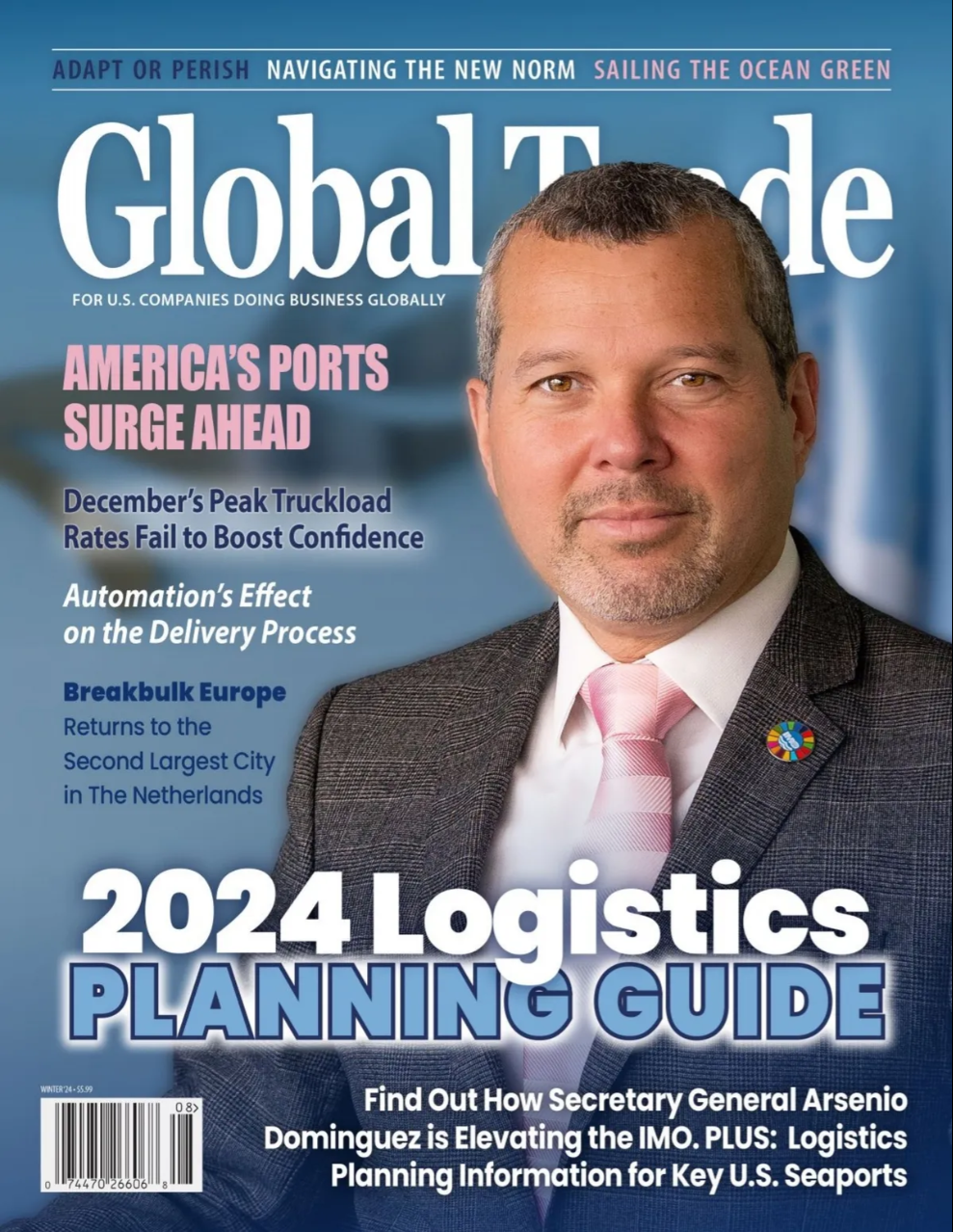For most people, the shipping industry only pops on their radar after disaster hits. In 2020, the COVID-19 pandemic snarled supply lines, creating months-long shipping issues. This March, the box ship Dali collided with the Francis Scott Key Bridge, blocking access to the Port of Baltimore and possibly causing a “significant ripple effect on global supply chains.”
Though, for industry professionals, shipping is top of mind 24/7, 365 days a year. Maritime shipping moves roughly 11 billion tons of goods each year. It does so while navigating challenges such as terminal congestion, detention and demurrage issues, the growing need for real-time visibility and automation, and the need to make the industry more environmentally sustainable.
Logistics get even more complex at intermodal port and terminal operations. These sites manage the transfer of containers and goods from ships to different modes of transportation: rail and trucks. Two cutting-edge companies have teamed up to strengthen port and terminal operations by streamlining data for better real-time visibility and easing friction across terminal operations through automation.
Collaboration Through Innovation
Tideworks Technology is a global technology brand and leading provider of terminal operating systems (TOS). Founded in the 1990s by Carrix, a multinational shipping entity, Tideworks has grown from an in-house IT provider to a software development company that helps marine and intermodal terminals move tens of millions of containers more efficiently each year.
Advent eModal is an industry leader in software solutions that provide executional tools and APIs that offer cargo visibility, terminal pre-advice and appointment setting, payment processing and data-enabled business intelligence across intermodal industries. Their cloud-based port platform is in each of the top 10 largest port communities, helping to optimize container volumes, increase truck turn times, and ease areas of friction with more control.
Together, Tideworks and Advent eModal are strengthening terminal operations and streamlining complex sets of logistics through real-time visibility. This has translated to increased efficiency, enhanced throughput, and more significant cost savings for terminal operators across the globe.
Industry Challenges
Outside forces have continually buffeted the shipping industry. However, stakeholders are also facing internal challenges around real-time access to cargo data, optimizing fluctuating container volumes, terminal congestion issues, and navigating sustainability and green initiatives.
So far, in 2023, there has been an uptick in U.S. container import volumes. Ports and terminals need real-time visibility and automation to optimize container volumes and move cargo through intermodal operations more quickly and efficiently.
Container volume issues also contribute to terminal congestion. A lack of real-time visibility into operations creates friction points between terminal operators, port authorities, and rail and motor carriers. These friction points, in turn, lead to congestion and the detention and demurrage issues that come with inefficient operations.
The industry, too, is working to address sustainability and green issues. Moving empty containers or containers with low volumes is not only inefficient—but it also contributes to environmental issues. Streamlining appointment schedules at intermodal terminals reduces emissions and gives operators more control for smoother operations.
Addressing Today’s Challenges
Tideworks’ TOS allows terminal operators to manage movement within ports, optimize yard space, and coordinate the different and complex types of terminal equipment through real-time data. It gives clients a single point of access to a wealth of data to help streamline and simplify processes, providing access to essential information in decision-making. Better data means better visibility, and that means better decisions.
Advent eModal’s SaaS solution extends that real-time visibility as goods and cargo move through ports. It gives beneficial cargo owners and terminal, motor and drayage carrier stakeholders access to cargo data, execution of the transfer, and information into truck volume in real time. It is truly a port-to-depot-to-delivery big picture that streamlines operations at each link in the supply chain.
Working together, Tideworks and Advent eModal streamline and strengthen shipping operations, increasing truck turn times while reducing idling and dwell times. Take, for example, the Port Everglades Terminal (PET).
PET’s new gate appointment system, powered by Advent eModal’s solution, went into effect in July 2023 to automate capabilities across its container terminal. Applications like eModal’s PreGate and Fee Manager increased the port’s cargo visibility and velocity while facilitating fee payments, and appointment functions more seamlessly. The partnership between Tideworks and Advent eModal allowed PET to scale its services for customers and supply chains by addressing some of the most pressing industry challenges.
The two companies also partnered with Genesee & Wyoming Inc. to implement solutions specifically for U.K. rail and terminal operations. The combination of the solutions helped ease chronic congestion.
Before the help of Tideworks and Advent eModal, it took Genesee & Wyoming two hours to clear gate queues at the beginning of each week. With the new TOS, it began clearing the gate in 20 minutes. The turnaround time for the more than 4,000 truck visits to the Birmingham, Cardiff, Doncaster, and Liverpool terminals dropped to below 26 minutes. Since that deployment, Tideworks and Advent eModal have supported G&W’s automation initiatives with deployments spanning several Freightliner and Pentalver sites.
The improvement isn’t just about efficiency. By streamlining and optimizing its operations, Genesee & Wyoming enhanced productivity, which helped scale container volumes across the Birmingham and Cardiff terminals and reduce truck turn times. All of these improved efficiencies result in greater throughput while lessening the environmental impact of idling trucks and wasted trips. The partnership also reduced operating costs, improved data accuracy, and created more positive customer experiences through pre-screening capabilities and predictive container planning.
The collaboration between Tideworks and Advent eModal redefines what is possible for intermodal shipping with integrated gate and TOS solutions. More control and a greater understanding of operations from port to depot to delivery, paired with predictive container planning, are helping operators strengthen and streamline terminal operations in an industry where timing and logistics are everything.









